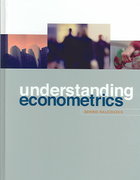Question
Solve question 1. Nate (similar to Freddy, who was discussed in class 19) is trying to decide whether Kimaya is a nice person. There is
Solve
question 1. Nate (similar to Freddy, who was discussed in class 19) is trying to decide whether
Kimaya is a nice person. There is an equal chance that Kimaya is mean, average, or
nice. Whenever a person meets Kimaya, she acts either pleasantly or unpleasantly.
If Kimaya is mean, she will act pleasantly one-quarter of the time; if she is average,
she will act pleasantly one-half of the time; and if she is nice, she will act pleasantly
three-quarters of the time (everyone has their bad days). In reality, Kimaya's behavior
is independent over time. But Nate believes in the law of small numbers, and has
N = 24 (That is to say, Nate believes that he is drawing from a set of 24, without
replacement).
Part (a) Suppose Nate meets Kimaya four times, and she is pleasant each time. This part
asks you to calculate the correct conclusions Nate should draw from this.
i. If Kimaya is mean, calculate the true probability that Kimaya is pleasant
four times in a row.
Hint: If they meet only once, what is the true probability that a mean Kimaya is pleasant that time? If they meet twice, what is the true probability that a mean Kimaya is pleasant both times? If they meet three times, what is the true probability that she is pleasant all three times?
ii. If Kimaya is average, calculate the true probability that Kimaya is pleasant
four times in a row.
iii. If Kimaya is nice, calculate the true probability that Kimaya is pleasant four
times in a row.
iv. Based on the answers to the previous parts, calculate the overall probability
that Kimaya is pleasant four times in a row.
v. Apply Bayes' rule and calculate the probability that Kimaya is nice conditional on the fact that she was observed to be pleasant four times in a row.
That is to say, if Nate has seen Kimaya be pleasant all four times, what is
the probability that she is truly nice?
Part (b) This part asks you to calculate the conclusions Nate draws from seeing Kimaya
be pleasant four times.
i. Calculate the probability with which Nate thinks Kimaya is pleasant four
times in a row if she is mean.
ii. Calculate the probability with which Nate thinks Kimaya is pleasant four
times in a row if she is average.
iii. Calculate the probability with which Nate thinks Kimaya is pleasant four
times in a row if she is nice.
iv. Based on the answers to the previous parts, calculate the overall probability
that Nate thinks Kimaya is pleasant four times in a row.
v. Apply Bayes' rule and calculate the probability with which Nate thinks Kimaya is nice conditional on the fact that she was pleasant four times in a
row.
Part (c) Explain the general intuition behind the difference in your final answers to parts
(a) and (b).
Part (d) Nate decides that he is not yet sure whether Kimaya is nice, so that he should meet
Kimaya regularly to find out. After a while, he meets her nineteen more times.
Before the first of these nineteen meetings takes place, the balls in his imaginary
urn are replenished (and they are not replenished again for the duration of these
nineteen meetings). This time Kimaya is pleasant twelve times and not pleasant
seven times. Does this increase or decrease Nate's confidence that Kimaya is nice?
Should it? Explain the intuition. [Hint: Although you can answer this question
using Bayes' rule, there is a simpler way to do it. Namely, you can ask whether a
mean, average, or nice Kimaya is most likely to be pleasant twelve times and not
pleasant seven times, and what Nate thinks about these likelihoods.]
question 2. Recall the Linda example from class (one of the primary examples Tversky and Kahneman used to motivate the representativeness heuristic). Let us call the description
of Linda given in the example simply "liberal." Suppose Mitch is a subject in the
experiment, and he suffers from base-rate neglect as introduced in class: whenever he
is thinking about whether a hypothesis is true, he acts as if the baseline probability
(base rate) of the hypothesis being true is 50%. (For example, if he is thinking about
whether Linda is a school teacher, he acts as if half the people are school teachers and
half are not.) Mitch knows that a bank teller has a 15% chance of being liberal, while a
person who is not a bank teller has a 50% chance of being liberal. Similarly, he knows
that a feminist bank teller has a 75% chance of being liberal, while a person who is
not a feminist bank teller has a 50% chance of being liberal.
(a) Derive the probability that Mitch attaches to Linda being a bank teller.
(b) Derive the probability that Mitch attaches to Linda being a feminist bank teller.
(c) Explain intuitively how the Linda example is a manifestation of base-rate neglect.
Step by Step Solution
There are 3 Steps involved in it
Step: 1

Get Instant Access to Expert-Tailored Solutions
See step-by-step solutions with expert insights and AI powered tools for academic success
Step: 2

Step: 3

Ace Your Homework with AI
Get the answers you need in no time with our AI-driven, step-by-step assistance
Get Started


